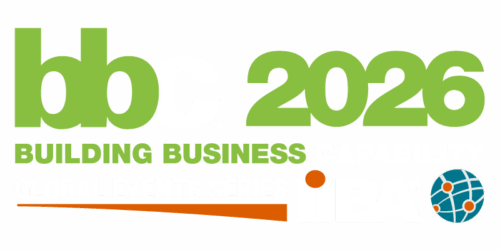The world around us is changing at an ever-increasing pace and organizations, institutions, and individual practitioners are struggling to keep up. We are professionals dedicated to enabling change and as such, the role of the business analyst and the discipline of business analysis must adapt to this brave new world. The business analysis professional is well placed to lead these changes and deliver value to their organizations.
In this unique format, three IIBA staff will share their perspectives on how business analysis professionals can succeed in this ever changing world. Come learn the different perspectives of three CBAP certified practitioners as they prepare you for success.
Digital business automation is a transformational journey for the enterprise: you should start small, but you must think big to reap all the benefits and synergies of the different capabilities such as business process, decisions, content management, or RPA. In this presentation, we show how a Design Thinking approach can help you get the most value from your first business automation project and later grow from project to program. You will learn about the key design thinking techniques and how to orchestrate them to foster innovation, elicit what is valuable to your enterprise, vet what is doable through business automation, and plan for building a series of minimum viable product.
Learning Objectives:
- Essential and practical design thinking techniques for rapid project
- How design thinking can expand the concept of business value beyond process efficiency
- How business can drive growth of digital business automation adoption
In our fast-paced world of work, where complexity is the norm and speed is of the essence, how can we draw out people’s creativity, when when it’s difficult to still their minds? How can we engage people in our project or presentation, when they’re likely to be distracted? How can we communicate as clearly as we possibly can, when we work on really complex, systemic challenges?
One answer is visual thinking, and specifically simple, hand-drawn graphics. Anyone can learn to draw these visual representations by hand, on paper or on a shared screen, to communicate clearly, to support innovation and creativity and to draw in colleagues and other stakeholders, wherever they are in the world. In this presentation, Penny will introduce short case studies of how visuals have transformed business analysis work around the world. You’ll learn why visuals work so well with human brains and how they help us to represent complex situations holistically. You’ll try out some simple visuals yourself and learn how to put them to use at work.
Learning Objectives:
- To understand how and why simple visuals are so powerful for clarity, creativity and engagement.
- To build confidence to give simple visuals a go back at base
- To find out what difference this had made to the work of others around the world
The head of Marketing turns to the head of Operations and says “Well now we’re talking about semantics.” Did you cringe? Did you immediately begin trying to find another way to ask the question to show the chasm between the definitions each of them apparently have on the matter? Then you too understand the power of words; in design and implementation.
During this interactive session we will explore two of the most powerful tools an Analyst or Architect has, which are some of the first skills we learn in grade school; synonyms and role playing. We will explore the power of words for delivering clarity and creating consensus through active engagement and “walking in someone else’s shoes”.
Learning Objectives:
- Recognizing pitfalls in language
- Tips for recognizing the need for clarity
- Paraphrasing; When and why?
- Leading an audience to consensus
Organizational change management (OCM) journeys, like expeditions, are voyages undertaken by a group of people with a particular purpose. Successful OCM journeys and successful expeditions both require strong leaders, diligent planning, and the ability to pivot or change direction based on environmental changes. During this session, we’ll discuss the need for change in change management, consider the similarities with and lessons learned from successful expeditions, and align agile values and principles with managing change. Ultimately, we will apply agile and expedition behaviors to change journeys with a focus on building flexibility and resilience in individuals, teams, and organizations.
Learning Objectives:
- Describe the need for agile change management.
- Explain the relationship between agile values/principles and change management.
- Describe the role of expedition behaviors in successful change.
- Apply agile practices and expedition behaviors to change.
